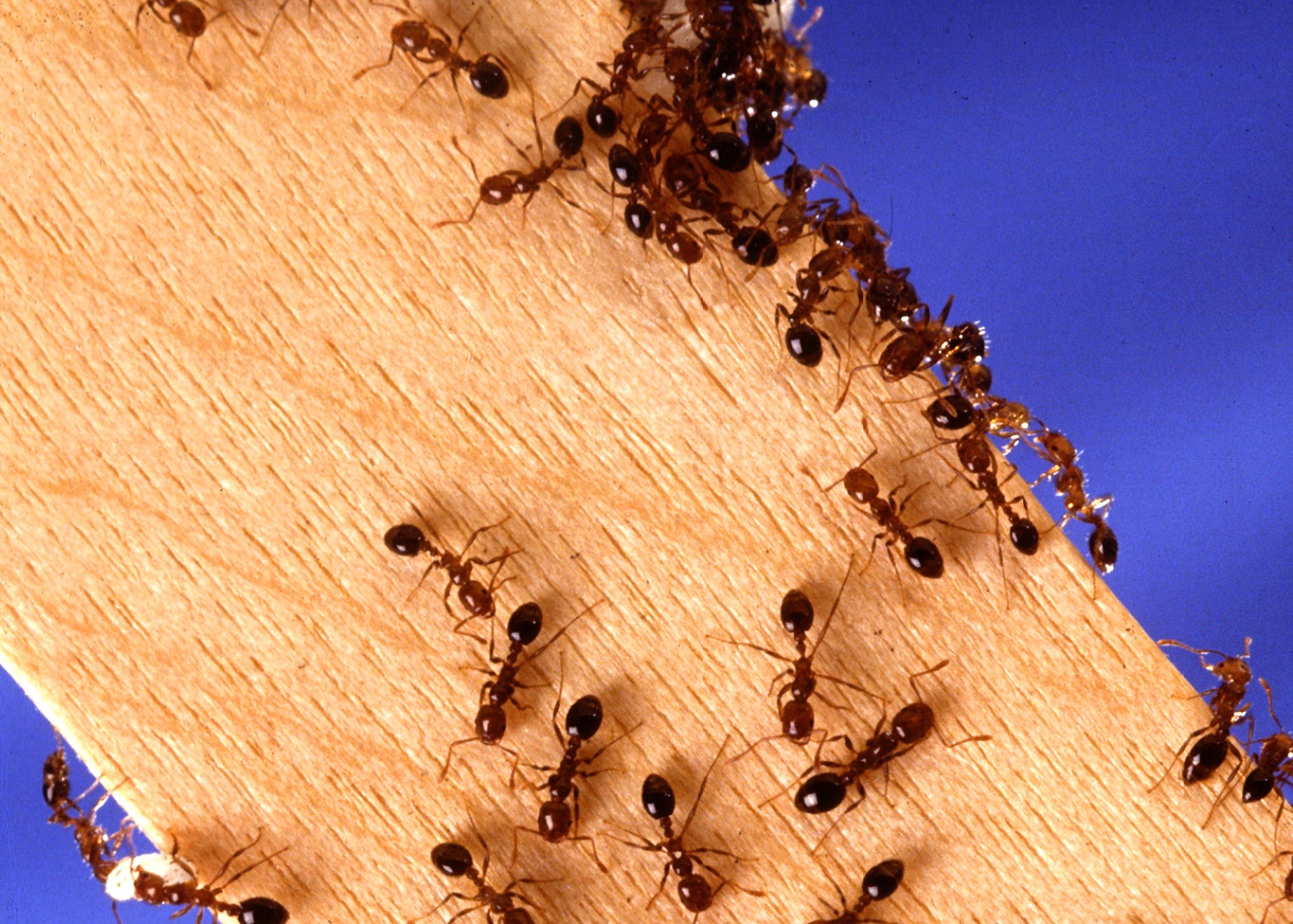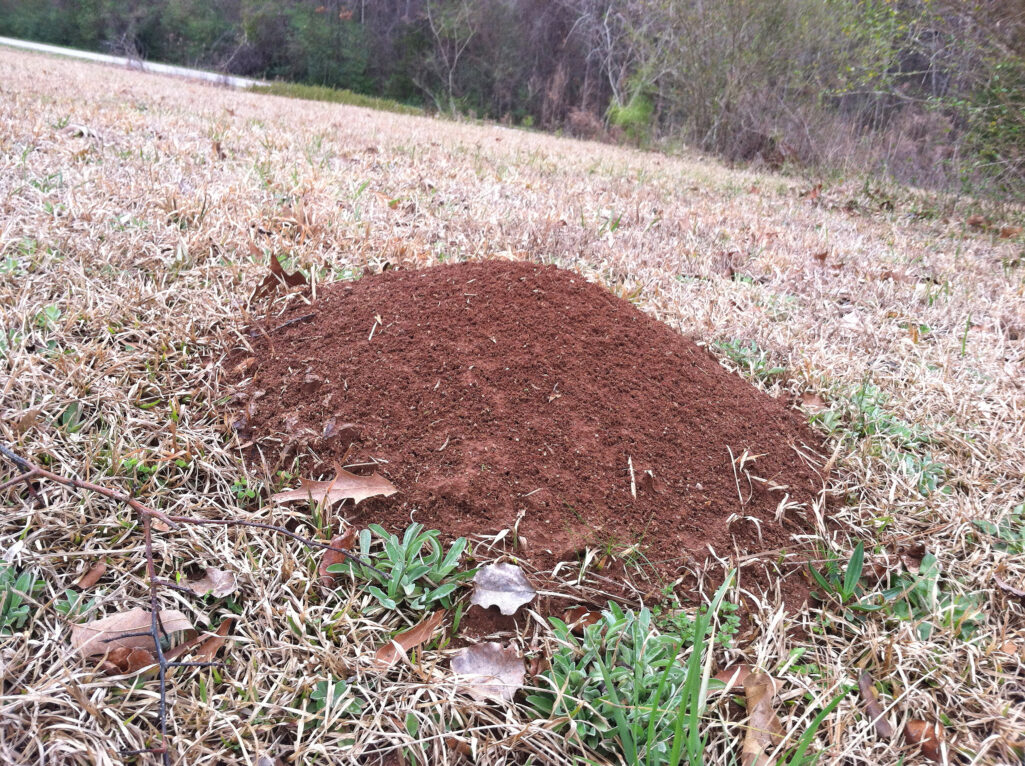
It’s harvest season. If you look closely around your yard you’ll probably see ants storing up resources to help them through this winter. Now is the time to hit them with a fresh bait application to help eliminate them for next year. It is important to keep in mind that fire ant research is not a hot topic in the scientific community because effective control products are available. It’s really quite easy with some patience.
Fire ants are active during warm spells all winter long according to Dr. Will Hudson at the University of Georgia. Any pest that can get inside a structure or go underground can survive year-round in Georgia. Thus the need to control them now, while they’re actively foraging. Bait treatment should be applied in Georgia in April/May and September/October to eliminate existing colonies and their mounds, but reinvasion can occur any time, Hudson explains. Four to six months later, the mounds will reappear, which means homeowners should treat for the pests twice a year, about six months apart. “Fire ant bait has to be put out when the ants are actively foraging,” Hudson says.

In the pasture, Amdro, Extenguish and Justice are labelled for control. The first two are listed for broadcast application, while Justice is best utilized as a mound treatment. In the home lawn, Amdro, Ascend, Varsity, Distance and Extenguish are labelled for broadcast baits. Homeowners often also like to follow up bait aplications with a mound treatment or broadcast insecticide to kill the remaining workers using products like Orthene TTO, Sevin 50WP, or Talstar. Keep in mind, if you don’t get the queen with a quality bait, the mound will probably return after killing the workers.
Make sure to buy fresh bait. Keep it cool and apply it in the afternoon when you see ants foraging. Buy only what you need, and apply it all at one time. It’s often applied to tasty corn grit to encourage the ants to pick it up. If the corn goes rancid, nobody is going to eat it. Another tip is to make sure it’s a few days after some rainfall so that the ants are foraging, and not rebuilding their mounds.
It won’t happen overnight, but if you follow these tips, you’ll be almost ant free by spring. You’ll also notice the baits often help control carpenter ants as well. For more information: https://extension.uga.edu/publications/detail.html?number=B1191&title=Managing%20Imported%20Fire%20Ants%20in%20Urban%20Areas.

